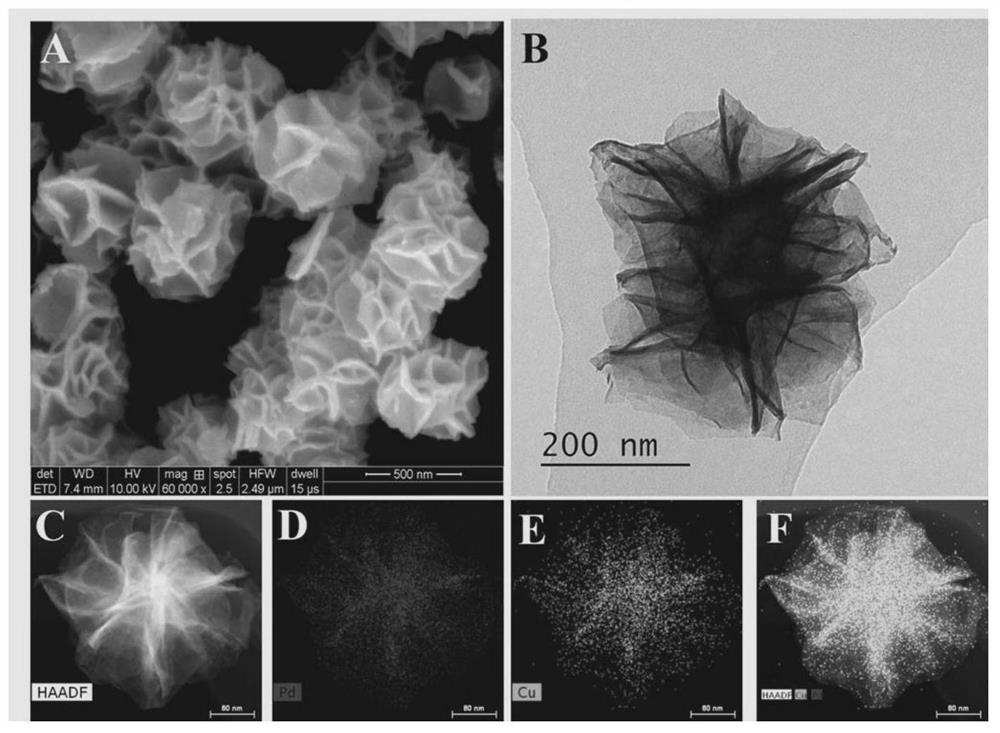Preparation method of palladium-copper bimetallic nanoflower peroxide and application of palladium-copper bimetallic nanoflower peroxide to glucose detection
A bimetallic nano-peroxide technology, applied in the field of optical sensing, can solve the problems of cumbersome steps and low catalytic activity, and achieve the effects of simple preparation process, increased contact area, and fast detection rate
- Summary
- Abstract
- Description
- Claims
- Application Information
AI Technical Summary
Problems solved by technology
Method used
Image
Examples
Embodiment 1
[0025] (1) Preparation and characterization of palladium-copper nanoflowers: 10 mg sodium tetrachloropalladate, 50 mg tungsten hexacarbonyl, x mg (x=0, 2.9, 5.8, 10, 29) copper chloride dihydrate, 8 mL Dimethylformamide and 2 mL of glacial acetic acid were added to a 25 mL round-bottomed flask; the above solution was ultrasonically mixed for 10 min, and then the homogeneously mixed solution was heated and stirred in an oil bath at 120 °C for 2 h; finally, the obtained product was mixed with water and Ethanol was washed by centrifugation several times, and finally dispersed in water. According to the stoichiometric ratio of palladium-copper precursors, the five products are recorded as Pd, Pd 1 Cu 0.5 , Pd 1 Cu 1.7 , Pd 1 Cu 3 and Pd 1 Cu 5 . The prepared PdCu nanoflowers were characterized by transmission electron microscopy, scanning electron microscopy, and X-ray photoelectron spectroscopy. from figure 1 and image 3 Transmission electron microscope and scanning e...
PUM
 Login to View More
Login to View More Abstract
Description
Claims
Application Information
 Login to View More
Login to View More - R&D
- Intellectual Property
- Life Sciences
- Materials
- Tech Scout
- Unparalleled Data Quality
- Higher Quality Content
- 60% Fewer Hallucinations
Browse by: Latest US Patents, China's latest patents, Technical Efficacy Thesaurus, Application Domain, Technology Topic, Popular Technical Reports.
© 2025 PatSnap. All rights reserved.Legal|Privacy policy|Modern Slavery Act Transparency Statement|Sitemap|About US| Contact US: help@patsnap.com



